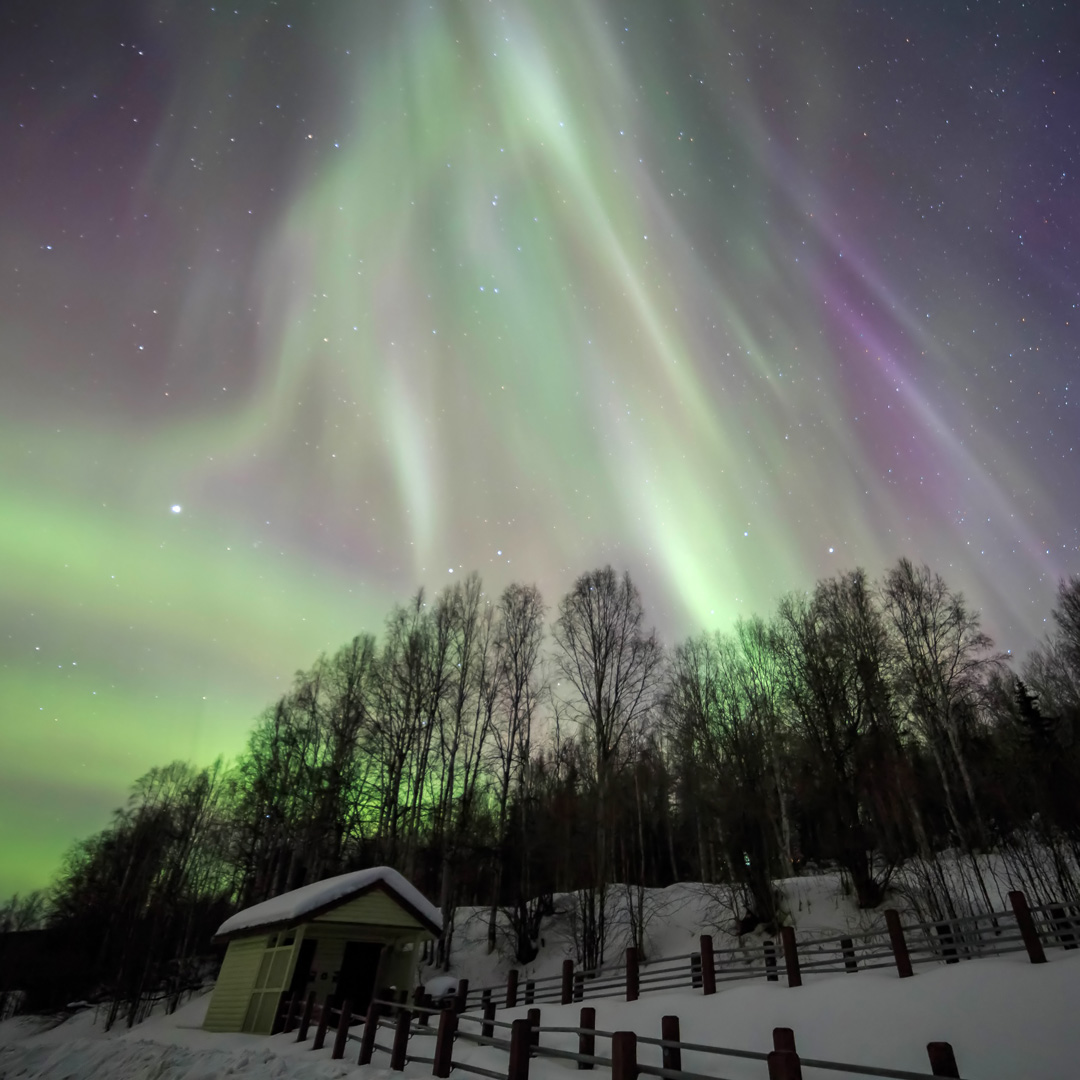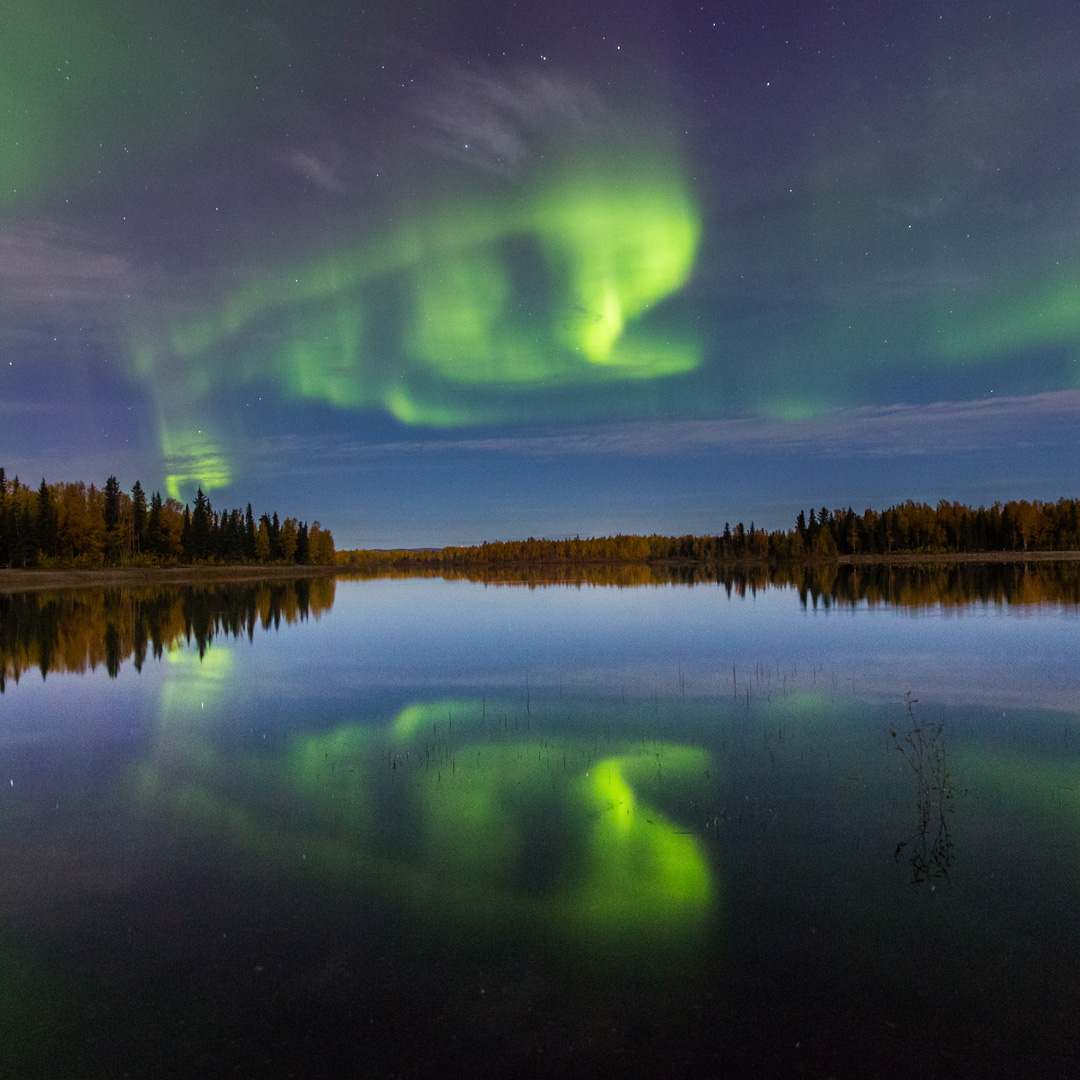Seeing Alaska’s Northern Lights
The enchanting phenomenon known as the northern lights, or aurora borealis, is caused by charged particles from the sun striking Earth’s atmosphere. The lights occupy an important place in the legends and mythology of every culture that evolved under their gaze. They’ve been viewed as healing spirits, the dancing spirits of our ancestors, animal spirits dancing in the sky, or human spirits playing ball.

Whatever their spiritual implications, the northern lights are beautiful. Even longtime residents will rush outside in their pajamas if a friend calls or texts to say the lights are shining. Unfortunately the lights are unpredictable and only visible when skies are dark and clear (October-April are the best months), so there’s no guarantee you’ll see them while you’re here—but if you take three or four days and use the following tips, you’ll have great odds.
- Plan your visit in Fairbanks, Nome, or a community farther north, like Utqiaġvik; all are at a high enough latitude to see the northern lights overhead. You might still see the aurora in more southerly parts of Alaska, but they’re more likely to shine low on the horizon and may even be blocked by mountains or buildings.
- Get as far away as you can from city lights and any other light pollution. The darker the sky, the clearer your view of the northern lights will be. That’s one reason why Chena Hot Springs is such a good place for viewing the northern lights. It’s 60 mi (97 km) out of town and offers heated viewing areas where you can watch for the lights all night long.

- Ask for a wake-up call. Most hotels under the “aurora oval” (the latitude at which the aurora shines overhead) will happily let you know if the aurora comes out. You can also check the University of Alaska Fairbanks Geophysical Institute’s aurora forecast.
- Be patient. The northern lights don’t shine every night, but if you spend three nights under the aurora oval when it’s dark enough to see them, and you’re actively looking for them, you have at least an 80 percent chance of seeing them.
Want to take a great photo of the northern lights? It’s more of an art than a science, but in general you’ll want to use a tripod, set your camera’s aperture to the largest possible (or to put it another way, set your f-stop to the lowest number), then fiddle a bit to find the right balance of higher-than-usual ISO and longer-than-usual shutter speed. Bonus points if you choose an object to be silhouetted in the foreground (it adds interest) and use a remote shutter release or a shutter delay, so the motion of you pushing the button doesn’t blur the image.
Newsletter Signup
By clicking ‘Sign Up,’ I acknowledge that I have read and agree to Hachette Book Group’s Privacy Policy and Terms of Use
Pin It for Later


